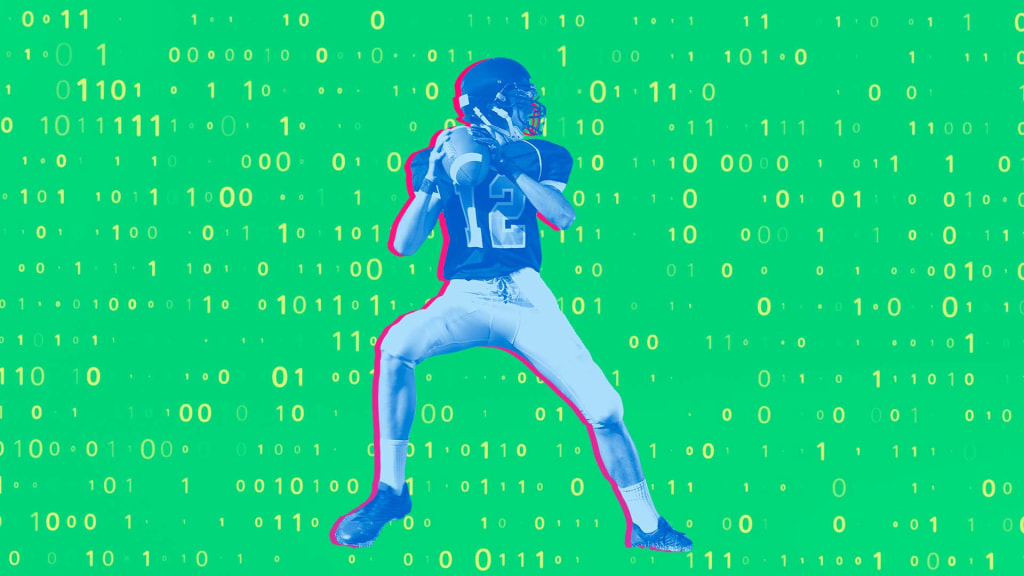
While Matthew Stafford and Joe Burrow battle in this year’s Super Bowl, artificial intelligence will be operating behind the scenes to measure just how well they really played.
The NFL is unveiling a new measure of quarterbacks’ performances within a given game. Called the Passing Score, the metric uses Amazon Web Services’ A.I. to assess a quarterback’s execution on each play. At the end of the game, the player is graded on a scale of 50 to 99. Priya Ponnapalli, senior manager and principal scientist at the Amazon Machine Learning Solutions Lab, says the tool can have implications beyond the sports world.
“These learnings and advances will ultimately extend beyond the football field to general wellness, among many potential applications,” she says. “It could expand to workplace health and safety, and better design of stadiums and work environments, like in manufacturing.”
The Passing Score was born out of the NFL’s interest in gaining a better understanding of quarterback play, according to Ponnapalli. “The league was interested in evaluating and understanding quarterback decision making,” she says, “such as whether the quarterback had considered all eligible receivers and evaluated trade-offs accurately.”
Quarterbacks make hundreds of split-second decisions every game. On each play, they need to evaluate the defense’s positioning, anticipate where players will move, identify which receivers are open, and weigh the risk versus reward of throwing to a given player — and then, hopefully, make an accurate throw. As such, the stats traditionally used to assess quarterbacks — completion percentage, passing yards, touchdowns — only tell part of the story.
Computer chips embedded in players’ equipment, on-field pylons, and footballs during games track the players’ location, movement, and speed throughout the game, Ponnapalli says. That data can be fed into a series of machine-learning models to come up with new metrics like the Passing Score.
Engineers, analysts, and data scientists at Next Gen Stats, the NFL’s advanced statistics arm, spent nearly a year applying A.I. and other data analysis tools from AWS to build the metric. “There was no existing playbook to build this kind of tool,” says Ponnapalli.
The team combined seven different machine-learning models to create the Passing Score. Among them is a new tool that evaluates the positioning and movement of the players to predict the likelihood a pass will be completed before it is thrown. This allows the NFL to measure, among other things, the most impressive plays that a quarterback made, which could be useful for coaches when reviewing game footage.
And it isn’t just coaches and scouts who will benefit. Ponnapalli says stats like these give fans a better understanding and more appreciation for players’ athletic feats. The Cincinnati Bengals and Los Angeles Rams, the teams in this year’s Super Bowl, recently used the tool to post compilations of this season’s most improbably successful passes by their quarterbacks — Burrow and Stafford, respectively — on YouTube.
Amazon says that fans watching the Super Bowl at home will be presented with Next Gen Stats during this year’s game, though a company spokesperson couldn’t confirm whether the Passing Score would be among them. Other Next Gen Stats measure things like the total distance a player ran on a given play, a player’s top sprinting speed, and how high a player jumped to catch a pass.
Outside of football, similar machine-learning applications could analyze workplace behavior to ensure employees are following protocols or working efficiently and safely. It’s not hard to envision a scenario in which workers are assigned scores based on how well they adhere to safety practices, which could then be used in employee evaluations and promotions. Some companies, such as Tyson, already use machine vision to study packaging inefficiencies; analyzing the behavior of the humans behind them seems like a logical next step.
The NFL recently released a ranking of all 14 quarterbacks whose teams qualified for the playoffs according to their Passing Scores. The league found that 13 of the 15 top-ranked quarterbacks made the playoffs — an interesting insight that’s only available thanks to some nifty A.I. work.